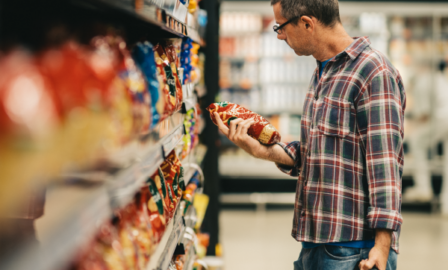Winning Strategies for the Snack Food Industry
The snacking category has seen consistent growth in recent years, growing 16% in 2022 to reach $28 billion. The category as a whole is expected to reach $38 billion by 2028, but the driving themes within snacking are expected to shift during that span. For snacking companies like Nestle, Hershey, and Mars (who has stated they intend to double their current snacking revenue in the next decade), the path to success in future years will look different than it did only a couple of years ago. Snacking occasions are on the rise. It’s reported that 71% of consumers snack at least twice a day, and 92% say they replace at least one meal a week with a snack. For snacking companies, this means opportunity is inevitable. Below are some winning snack food industry strategies to ensure you’re ready to take a bite out of the new snacking trends.
3 Snack Food Industry Strategies for 2024 and Beyond
To see success in 2024 and beyond, the snack industry will need to be successful in three key areas:
- Understanding and capitalizing on the perceived healthy snacking movement
- Maximizing unfound sources of revenue through acquisitions and targeted market expansion
- Creating impulse purchase opportunities in a digitized world
1. Perceived Healthy Snacking
Consumers are using snacks as a way to stay healthy, both mentally and physically. Indulgent snacks are still the favorites since many consumers use them as positive rewards tied to mental well-being, but the healthy snacking trend has made better-for-you items a driving force within the overall snacking category.
Customers are already making snack choices with their physical health in mind – sales of snacks with 15+ grams of protein grew 40% in 2022 – but 2023 also brought the rise of appetite-suppressing drugs like Ozempic and Wegovy, direct rivals to the idea of indulgent snacking and something that will make it even more difficult for companies to entice consumers with traditionally sugary, sweet goodies. To stay healthy aside from calorie counting, many older snackers look for functional benefits such as immune support and metabolism health as well.
Beyond nutrition, young snackers are looking for novelty, indulging their palettes with new and innovative flavors. According to Circana, unique flavors have been gaining popularity. Bold flavors, like Flamin’ Hot Sweet Carolina and Tangy Tamarind, and blended flavors, like coconut and caramel and strawberry and squash, have been doing well.
As healthy snacking continues to grow, companies that offer unique flavors and that capitalize on the snacking movement toward perceived health will stay ahead of the curve and win with the emerging consumer.
2. Acquisition and Global Expansion
The last several years have seen many large acquisitions by snack companies, especially for brands in the healthy snacking space. Since 2020, a few examples of major acquisitions we’ve seen include: Mars purchased Kind, Tru Fru, Nature’s Bakery, and, most recently, Kevin’s Natural Foods; Mondelez bought Clif and Perfect Snacks; Hershey bought One Brands; and Simply Good Foods Co. bought Quest to pair with their Atkins Health line. The biggest players have all acquired multiple growing brands that expand the purchasing company’s portfolio into new palettes. As consumers look for new items, it’s often cheaper to grow high-potential brands than it is to start one from scratch. Having an effective M&A strategy will be crucial to a company’s long-term success.
Additionally, the high number of acquisitions has created a saturated market in the U.S., pushing large brands to begin looking abroad for better revenue. Markets like China, Brazil, and India have been high-value targets for expanding snack companies, especially for the recently acquired better-for-you brands that don’t yet have the same saturation level as the category in the U.S. Creating a successful sell-abroad strategy could unlock an entirely new market, increasing revenue while also developing an untapped customer base.
3. Create Impulse Purchases in a Digital World
Following the path of the grocery aisle, snack shopping has increasingly shifted online. This change poses a particular challenge for an aisle that often relies on impulse purchases, making it even more crucial for companies to find new ways to establish themselves in a digital world.
Understanding the nuances of online shopping will help companies optimize their offerings across all platforms. eCommerce snacking has multiple different avenues for purchase: traditional brick-and-mortar stores’online offerings like Walmart or Kroger, pure plays like Amazon and, probably the most crucial in the snack world, food delivery companies like Instacart, Uber, and GoPuff. Each platform requires a different portfolio, price, format, packaging, and sales strategy designed for the purpose of the specific channel.
The snack category thrives off impulse purchases, pushing snack companies to continuously try new tactics to find the right path to a digital impulse sale. In 2020, Nestle’s KitKat Chocolatory team held Australia’s first Facebook-live shopping experience, showcasing confectionary creations and offering limited time offers for purchase through the livestream itself. Unilever has partnered with instant delivery companies to offer deals during eSports tournament livestreams, and Mars has hosted e-Sports tournaments in emerging digital countries.
Successful or not, the new path-to-purchase model requires brands to step out of their comfort zone and find opportunities to meet the customer wherever they are.
Looking Ahead
Snacking is here to stay – 75% of consumers always find room in their budget for snacks. We’re seeing consumers use snacks for a variety of reasons – to indulge themselves for a mental health break, replace a full meal with a light bite, or take in functional benefits on the go. While “healthy” isn’t traditionally associated with snacking, this new trend brings an opportunity for brands to grow in an already mature category.
Companies that create or acquire healthy brands will have an immediate advantage in the U.S. market, but the biggest winners will be the companies that leverage emerging opportunities to gain purchases away from their current most dominant sales strategies – by going abroad to new and less-saturated markets and by developing new strategies to own the digital impulse purchase.
Subscribe to Clarkston's Insights




